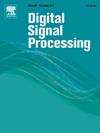KANSeg:一种基于Kolmogorov-Arnold网络的多器官医学图像分割模型
IF 2.9
3区 工程技术
Q2 ENGINEERING, ELECTRICAL & ELECTRONIC
引用次数: 0
摘要
目前,基于卷积神经网络的多器官分割方法在医学图像分析中取得了里程碑式的进展。然而,也存在一些具有挑战性的问题,如复杂的背景,模糊的器官之间的界限。这将导致较差的边界分割。为了解决这个问题,我们提出了一种基于Kolmogorov-Arnold网络(KAN)的多器官分割方法,称为KANSeg。我们开发了一个kan激活卷积模块(KAN-ACM)来构建编码器和解码器,从而增强了对多器官图像中复杂模式的学习和解释。此外,为了进一步增强模型表示非线性特征的能力,我们设计了一个KAN瓶颈模块(KAN- bm)来提取更多的判别特征。最后,我们在两个数据集上进行了综合实验。所提出的KANSeg在Synapse多器官数据集(Synapse)和自动心脏诊断挑战(ACDC)数据集上的Dice Score分别达到79.95%和90.99%。结果表明,与最先进的方法相比,我们的方法产生了更准确的分割结果。本文章由计算机程序翻译,如有差异,请以英文原文为准。
KANSeg: An efficient medical image segmentation model based on Kolmogorov-Arnold networks for multi-organ segmentation
Currently, multi-organ segmentation methods based on convolution neural networks have achieved milestones in medical image analysis. However, there are some challenging issues such as the complex background, blurred boundaries between organs. These lead to poor boundary segmentation. To address this issue, we propose a multi-organ segmentation method based on Kolmogorov-Arnold Networks (KAN), called KANSeg. We develop a KAN-Activated Convolution module (KAN-ACM) to construct both the encoder and decoder, thereby enhancing the learning and interpretation of intricate patterns within multi-organ images. Moreover, to further augment the model's ability to represent nonlinear features, we design a KAN bottleneck module (KAN-BM) to extract more discriminative features. Finally, we conduct comprehensive experiments on two datasets. The proposed KANSeg can achieve Dice Score of 79.95%, 90.99% on the Synapse multi-organ dataset (Synapse) and the Automated cardiac diagnosis challenge (ACDC) datasets. The outcomes demonstrate that our method yields more accurate segmentation results compared with state-of-the-art methods.
求助全文
通过发布文献求助,成功后即可免费获取论文全文。
去求助
来源期刊

Digital Signal Processing
工程技术-工程:电子与电气
CiteScore
5.30
自引率
17.20%
发文量
435
审稿时长
66 days
期刊介绍:
Digital Signal Processing: A Review Journal is one of the oldest and most established journals in the field of signal processing yet it aims to be the most innovative. The Journal invites top quality research articles at the frontiers of research in all aspects of signal processing. Our objective is to provide a platform for the publication of ground-breaking research in signal processing with both academic and industrial appeal.
The journal has a special emphasis on statistical signal processing methodology such as Bayesian signal processing, and encourages articles on emerging applications of signal processing such as:
• big data• machine learning• internet of things• information security• systems biology and computational biology,• financial time series analysis,• autonomous vehicles,• quantum computing,• neuromorphic engineering,• human-computer interaction and intelligent user interfaces,• environmental signal processing,• geophysical signal processing including seismic signal processing,• chemioinformatics and bioinformatics,• audio, visual and performance arts,• disaster management and prevention,• renewable energy,
 求助内容:
求助内容: 应助结果提醒方式:
应助结果提醒方式:


